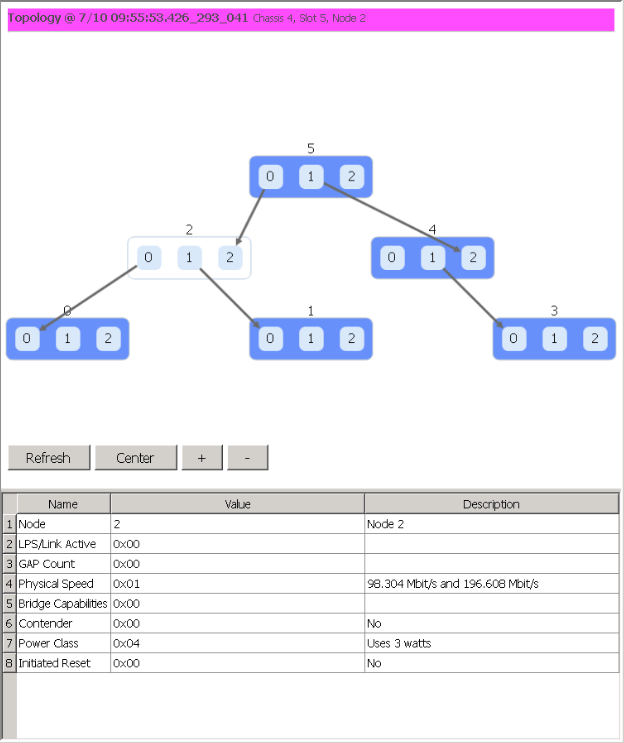

- #Use wireshark to examine ethernet frames topology how to
- #Use wireshark to examine ethernet frames topology driver
- #Use wireshark to examine ethernet frames topology mac
The purpose of this bit is that if you change your MAC address you should also set this bit to 1 in the new MAC address so that it is clear it is not a factory default MAC address. This bit is always set to 0 for all assigned OIDs. The second least significant bit of the first byte is the "Locally Administrated" bit. Patton's list of multicast addresses, and Wireshark's list of Ethernet vendor codes and well-known MAC addresses, from the Wireshark source distribution, for assigned multicast addresses.

A number of multicast addresses have been assigned see Ethernet numbers at the IANA, Michael A. You can also search for a particular OUI from the IEEE OUI and Company_id Assignments page.Ī destination MAC address of ff:ff:ff:ff:ff:ff indicates a Broadcast, meaning the packet is sent from one host to any other on that network.Ī destination MAC address where the low-order bit of the first byte is set indicates a Multicast, meaning the packet is sent from one host to all hosts on the network interested in packets sent to that MAC address. Patton's list of vendor codes, and Wireshark's list of Ethernet vendor codes and well-known MAC addresses, from the Wireshark source distribution, for assigned OUIs. See the IEEE OUI list, Ethernet numbers at the IANA, Michael A. The first three bytes of the address are assigned to a specific vendor or organization they're referred to as an Organizationally Unique Identifier, or an OUI. MAC address fieldsĪn Ethernet host is addressed by its Ethernet MAC address, a 6 byte number usually displayed as: 08:00:08:15:ca:fe (the delimiters vary, so you might see 08-00-08-15-ca-fe or the like). XXX - 1GBit (10GBit?) Ethernet allows "Jumbo Ethernet Frames" of 9000? bytes, making the above standard Ethernet graphic inappropriate.įor operating system developers: it's considered to be a security threat to send uninitialised padding data!įor protocol developers: If the upper layer protocol implementation has to know exactly how much user data is in the packet, and expects the length of the Ethernet packet to indicate the amount of user data, it will not behave correctly with padded packets!Įven if the VLAN tag is 4 bytes, the minimum size of the Ethernet frame with VLAN tagging is 64 bytes. (XXX - add a list of system that supply the FCS and the systems that don't?) This can be confusing as the FCS is often not shown by Wireshark, simply because the underlying mechanisms simply don't supply it. Allowed Packet LengthsĮthernet packets with less than the minimum 64 bytes for an Ethernet packet (header + user data + FCS) are padded to 64 bytes, which means that if there's less than 64-(14+4) = 46 bytes of user data, extra padding data is added to the packet.īeware: the minimum Ethernet packet size is commonly mentioned at 64 bytes, which is including the FCS.
#Use wireshark to examine ethernet frames topology driver
Most Ethernet interfaces also either don't supply the FCS to Wireshark or other applications, or aren't configured by their driver to do so therefore, Wireshark will typically only be given the green fields, although on some platforms, with some interfaces, the FCS will be supplied on incoming packets. Packet formatĪ physical Ethernet packet will look like this: PreambleĪs the Ethernet hardware filters the preamble, it is not given to Wireshark or any other application.
#Use wireshark to examine ethernet frames topology how to
Information how to capture on an Ethernet network can be found at the CaptureSetup/Ethernet page. You can find hardware related Ethernet information at the EthernetHardware page. It is specified by various IEEE 802.3 specifications.Įthernet sends network packets from the sending host to one ( Unicast) or more ( Multicast/ Broadcast) receiving hosts. Ethernet is the most common local area networking technology, and, with gigabit and 10 gigabit Ethernet, is also being used for metropolitan-area and wide-area networking.


 0 kommentar(er)
0 kommentar(er)
